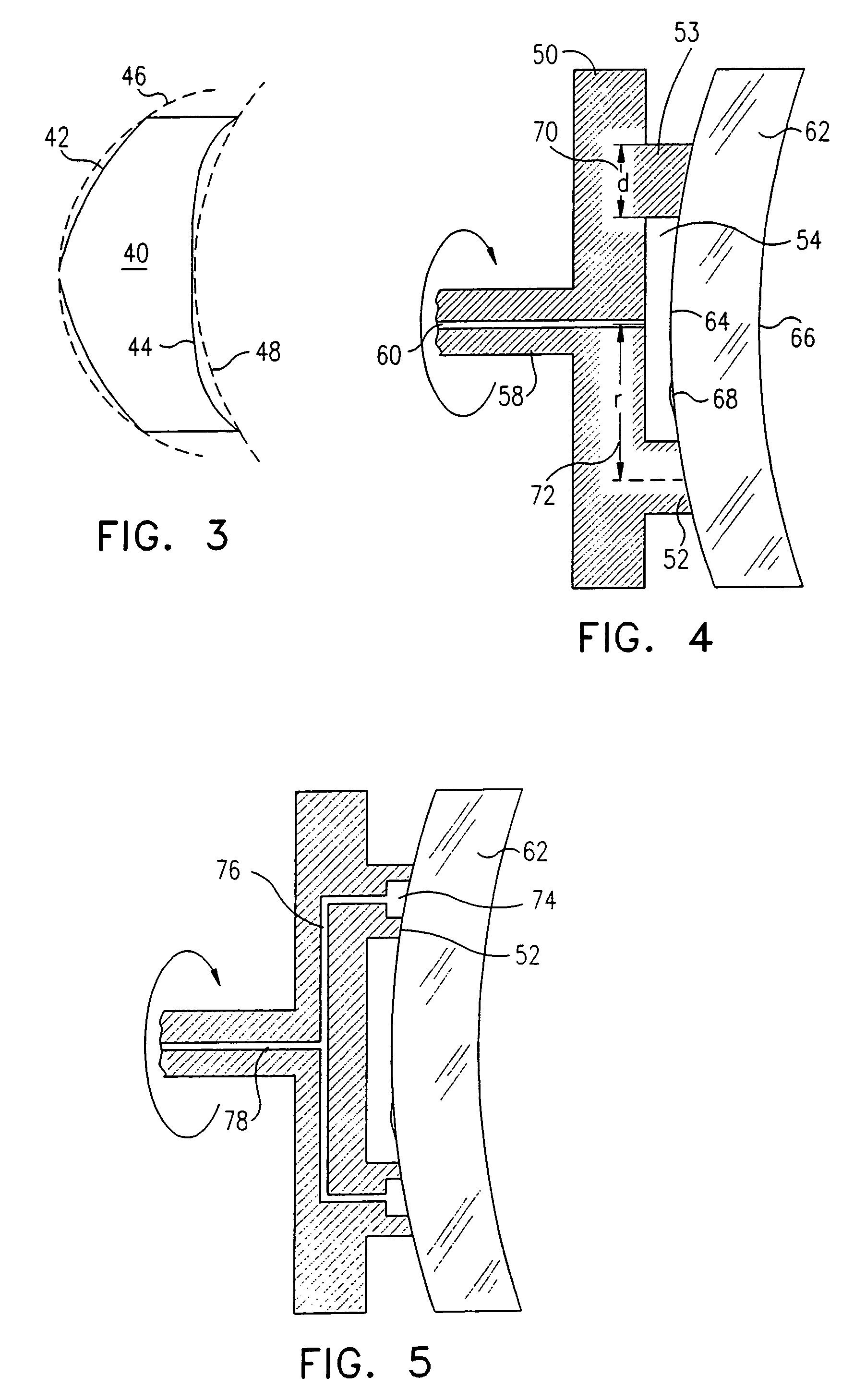Precision double-sided aspheric element
a technology of optical elements and aspheric elements, applied in the field of precision aspheric optical elements, can solve problems such as difficulty in manufacturing
- Summary
- Abstract
- Description
- Claims
- Application Information
AI Technical Summary
Benefits of technology
Problems solved by technology
Method used
Image
Examples
Embodiment Construction
[0061]Reference is now made to FIG. 1, which illustrates schematically a prior art aspheric element 10, manufactured according to single point turning techniques hitherto available. The element could be a lens, a double-sided mirror or any other suitable double sided optical element, but in this preferred embodiment, a lens example is described. For use in an infra-red thermal imaging system, operating in the 8 to 12 μm or the 3 to 5 μm wavelength region, the lens may be made of a suitable material of the infra-red transmissive materials, such as polycrystalline or single crystal germanium, or CVD-grown zinc selenide or zinc sulphide, or gallium arsenide, silicon, or others. The first surface of the lens 12, which is the surface chucked in the machine, has a spherical form, as shown by the dotted arc of a circle 16. This surface is typically made by conventional lens grinding and polishing techniques. The opposite and second surface 14, which before diamond turning also had a spheri...
PUM
| Property | Measurement | Unit |
|---|---|---|
| Fraction | aaaaa | aaaaa |
| Size | aaaaa | aaaaa |
| Volume | aaaaa | aaaaa |
Abstract
Description
Claims
Application Information
 Login to View More
Login to View More - R&D
- Intellectual Property
- Life Sciences
- Materials
- Tech Scout
- Unparalleled Data Quality
- Higher Quality Content
- 60% Fewer Hallucinations
Browse by: Latest US Patents, China's latest patents, Technical Efficacy Thesaurus, Application Domain, Technology Topic, Popular Technical Reports.
© 2025 PatSnap. All rights reserved.Legal|Privacy policy|Modern Slavery Act Transparency Statement|Sitemap|About US| Contact US: help@patsnap.com



